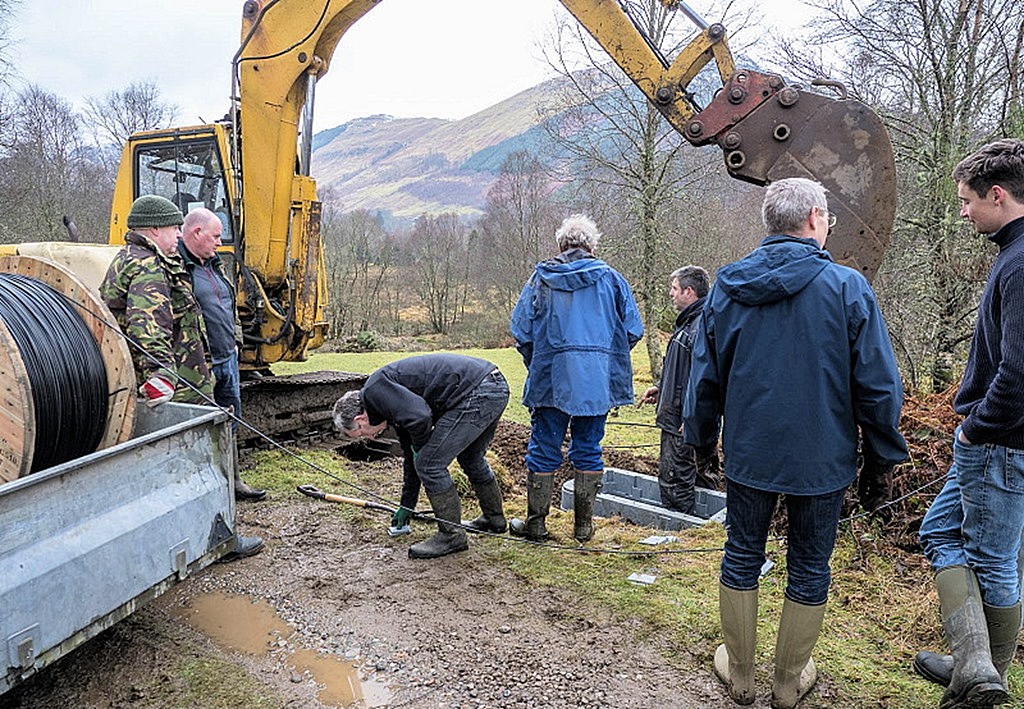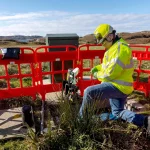Balquhidder Community in Scotland Build Own 1Gbps FTTP Broadband
The Balquhidder Community Broadband project, which is a Community Interest Company (CIC) that has won support from UK ISP Bogons and the Stirling Council in Scotland, has officially launched their new 1Gbps FTTP broadband network that will serve all 197 premises in the Balquhidder area.
Unfortunately many in the Balquhidder area are currently unable to obtain a decent broadband service over Openreach’s (BT) network, which is due to its remote location, mountainous terrain and the fact that most services are delivered over old Exchange Only Lines (EOL); these can be very expensive to upgrade.
A few years ago the BCB campaign was established to resolve this problem by building a new 1000Mbps capable Fibre-to-the-Premises (FTTP) network in the area. After a lot of hard work the network finally began construction in late 2017 and they’ve now reached a point where the development is mature enough to be given an official launch.
Advertisement
So far as we can tell the new network largely exists outside the scope of the current Digital Scotland project, while building of the BCB fibre began before the future R100 scheme had been fleshed out.
Richard Harris, BCB Director and Founder, said:
“Balquhidder, like much of rural Scotland, offers a high quality of life in an active community in stunning surroundings. And, like all those areas, it’s economic development and resilience have been crippled by the lack of effective communications. I’ve spent eleven years in efforts that have led to this project, during which time I’ve twice had to move growing companies out of Scotland because of poor communications.
I now run an international AI and augmented reality company, for which a reliable, high-speed internet connection is vital. Without this network we would soon have had to move out of the area altogether. With it, we can now do the opposite: start to attract more skilled individuals and other companies into the area.”
The deployment is starting with the community of Balquhidder, including some 190 properties in Balquhidder, Ballimore and Kirkton glens, in Loch Lomond and the Trossachs National Park. BCB are also putting in a backbone of around 32km of ducting from three active nodes, which will give them redundant loops around the area.
The first sector of the network (Stronvar) is now live, with approximately 8km of the backbone ducting installed and the first properties in this sector having already connected to the service. A lot of preparation work has also taken place for the build to Balquhidder Village and the Ballinluig, Gartnafuran clusters.
Margaret Brisley, Stirling Council’s Finance Chair, said:
“Access to high speed broadband and connectivity is a major issue for communities in rural Stirling, impacting on economic growth and access to services. The Balquhidder Community Broadband Project is an excellent example of a community providing a solution to this challenge, supported by Stirling Council and private sector partners.
The council recognises the leadership and commitment shown by the community and is delighted to work in partnership to deliver this project. Providing world class broadband connectivity to Balquhidder will be transformational, enabling and supporting the economic growth of the area whilst giving the community full access to services.”
Apparently the plan is to have the Monachyle Mhor hotel at the west end of the glen connected in time for its big food and music festival (http://mhorfestival.net) at the end of May. After that the goal is to have the vast majority of the glen connected by the end of 2018.
Advertisement
The project is funded in part by an initial £100,000 investment from Stirling Council, along with a similar investment from its commercial partner. ISPreview.co.uk understands that the total build budget comes to around £400k, plus an allowance for contingency. Most of the build costs are being met through: volunteer effort, investment from Stirling Council and match funding from Bogons.
However BCB said that negotiation over fibre and ducting costs, as well as the ability and enthusiasm of their volunteers to build their own tools (e.g. they have a self-laying mole plough that can be attached to a digger arm to reach over walls or fences and into soft ground), means they’re already optimistic about coming in under budget.
Meanwhile Bogons, which owns a rather unique nuclear bunker in Cultybraggan (near Comrie) that is being turned into a datacentre, has been giving significant help to the project. As we understand it, BCB have a 1Gbps Openreach EAD link to a cabinet at Stronvar, which routes back through the Strathyre exchange to Bogons nuclear bunker. From there, Bogons has 2 x 100Gbps links to the outside world.
“Balquhidder is our first local project of this nature. Since our work with BCB started we have also now taken on wireless internet service provider provision for neighbouring Loch Tay [AB Internet]. We are looking to help other communities where the community is willing to do the digging and other works for us to install fibre,” said Brandon Butterworth, Director of Bogons Ltd.
Advertisement

Apparently there is still a gap in the project’s funding and as a result they’ve been actively campaigning for the Government to launch a new business connectivity voucher scheme, which finally materialised last week (details here). Meanwhile residents typically pay £35 per month and a £135 one-off install fee in order to receive the 1Gbps unlimited service (symmetrical speeds). Extra capacity can easily be added to support growth.
The BCB project expects to “bring millions of pounds in economic gains“, which they claim will boost the local economy by improving jobs, diversity and resilience. Property prices are also expected to rise, while residents and businesses will be able to better access commercial and public services online.
Richard told ISPreview.co.uk that BCB already have more than 65% of properties committed to taking the new service and expect to “generate a modest operating profit“, which should be enough to pay back the private investment in the network over a “reasonable period“. The community retains ownership of all in-ground infrastructure.
Mark is a professional technology writer, IT consultant and computer engineer from Dorset (England), he also founded ISPreview in 1999 and enjoys analysing the latest telecoms and broadband developments. Find me on X (Twitter), Mastodon, Facebook, BlueSky, Threads.net and Linkedin.
« Virgin Media UK Extends Ultrafast Broadband Network in Scotland

















































Comments are closed